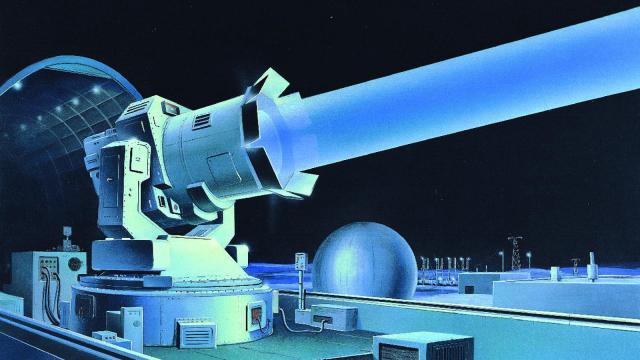When US-Soviet relationships were at their frostiest in the 1980s, there was no telling what sort of exotic threat was about to come roaring through Russia’s Iron Curtain. That’s where the Defence Intelligence Agency came in.
This low-profile intelligence agency — the DoD’s answer the the CIA — worked around the clock to discover emerging Soviet military menaces and report them to Washington. Because of the Top Secret nature of these subjects, the agency employed a team of artists to create highly accurate renderings of each threat, for use in policy briefings and DIA publications like Soviet Military Power. These subjects were so top secret that the renderings themselves were considered classified material.
Between 1965 and 1989, DIA’s artists created more than 1000 paintings and drawings of Soviet threats — now known as the DIA Military Art Collection. Here are 10 of the most intimidating weapons we thought the Soviets were developing.
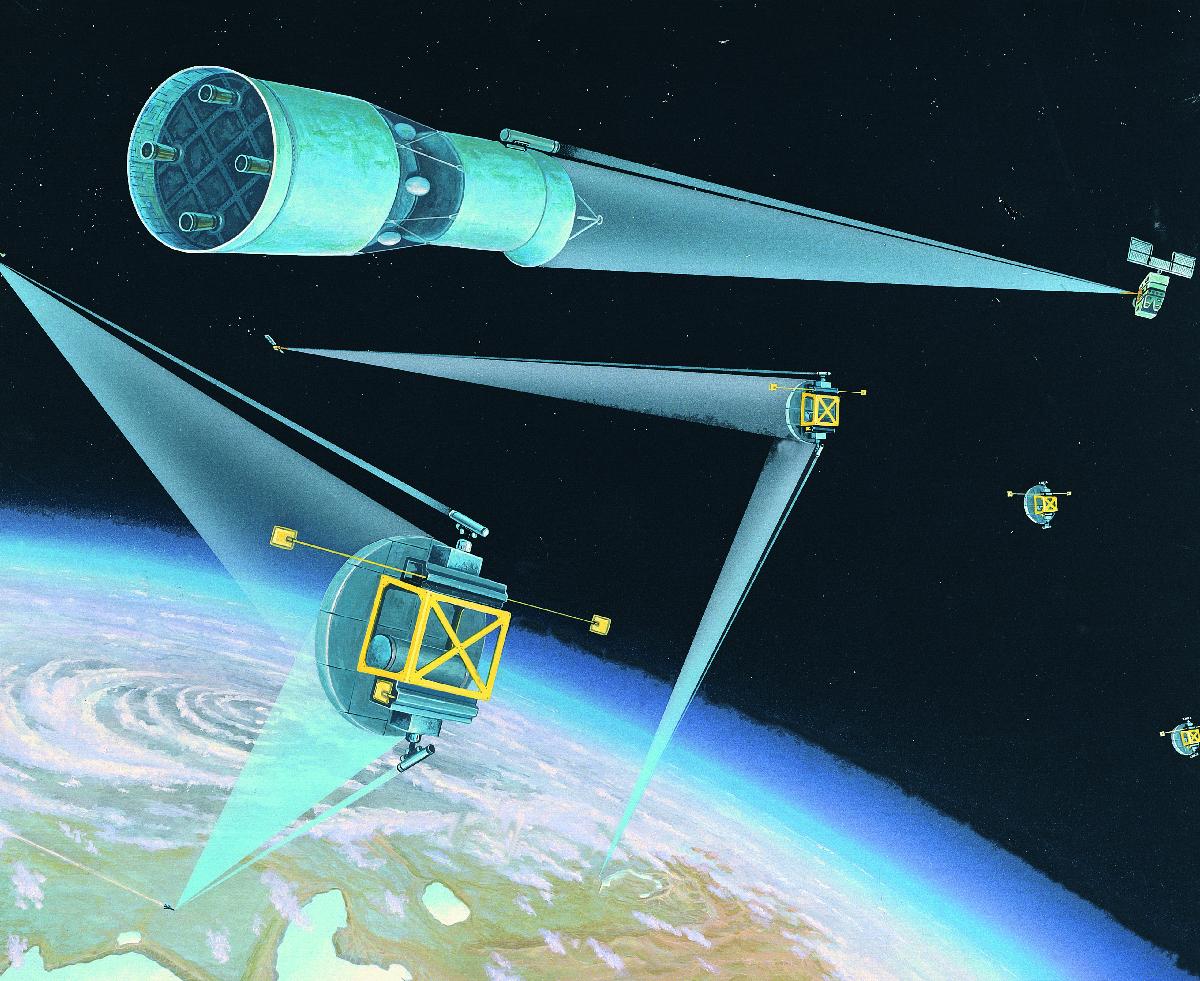
Soviet Space-Based Strategic Defenses by Ronald C. Wittmann, 1987
Just because the Soviets were publicly opposed to President Reagan’s Strategic Defence Initiative, aka “Star Wars,” doesn’t mean they weren’t feverishly working on their own version. The Soviet Space-Based Strategic Defenses were part of a unified land, air, and space-based shield against Moscow-bound ballistic missiles.
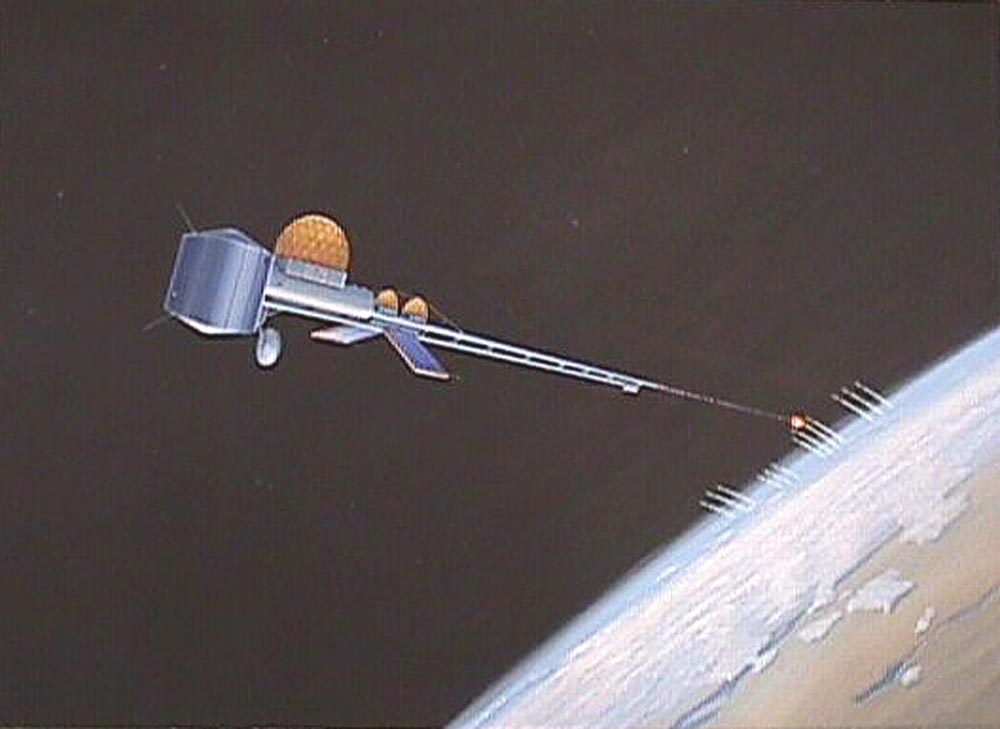
Space Particle Beam by Ronald C. Wittmann, 1987
Rather than try to hit a tiny satellite zooming thousands of miles an hour miles overhead with a ground-based laser, why not just send up another satellite to shoot it out of the sky? The Soviets explored the idea of hunter-killer satellites armed with particle-beam, kinetic, and laser-based weaponry throughout the 1980s. None of the technologies were ever launched, though.
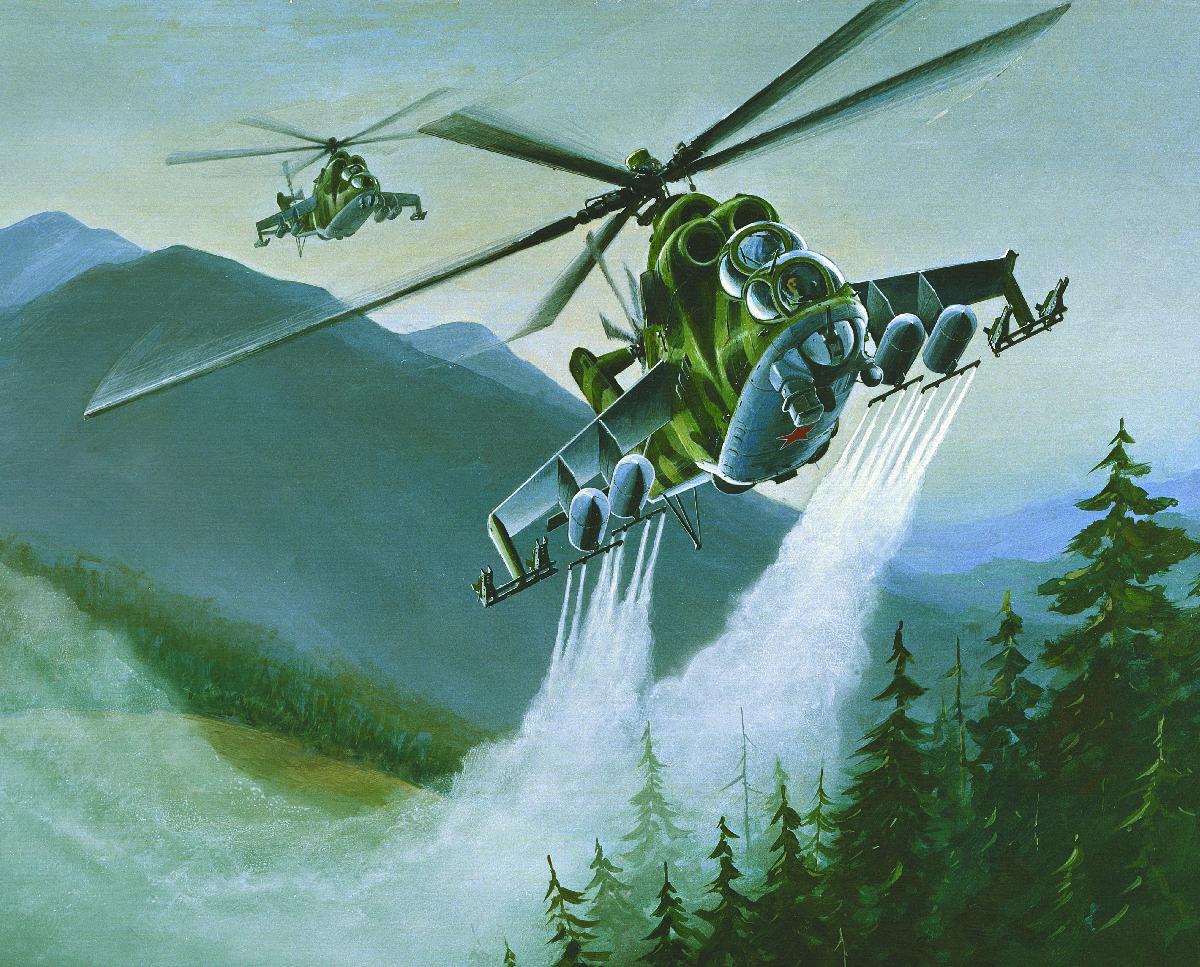
Soviet MI-24 HIND Delivering Chemical Spray by Edward L. Cooper, 1986
The MI-24 HIND is terrifying enough on its own. But when outfitted with chemical dispersal pods, these heavy assault choppers could rapidly crop dust death over a huge battlefield or metropolitan area. And it’s not like the Soviets were running short on chemical weapons, — the USSR maintained a supply so deadly, it would make Syria’s stockpiles look like a tin of Altoids. Terrifyingly, every single medium- and long-range weapon system in the Soviet arsenal could be re-purposed for chemical warfare.
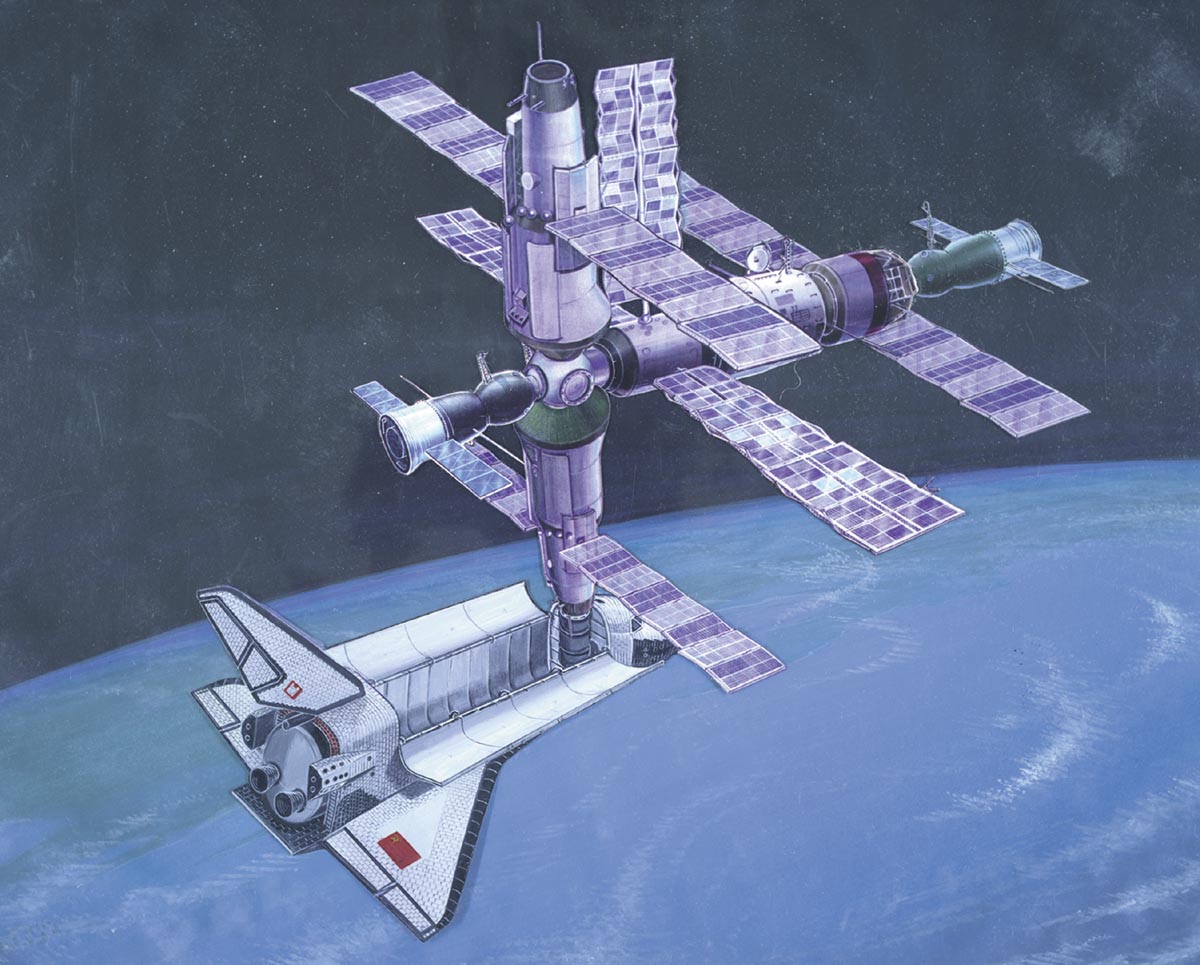
Soviet Space Station and Shuttle by Brian W. McMullin, 1986
In what would have been an equivalent counter-punch to the US landing on the Moon and a devastating blow to American pride, the USSR planned to create both a permanent space station orbiting the Earth and a reusable shuttle craft to service it. Thank sweet baby Jesus (and Reagan) that this techno-political catastrophe never actually occurred.
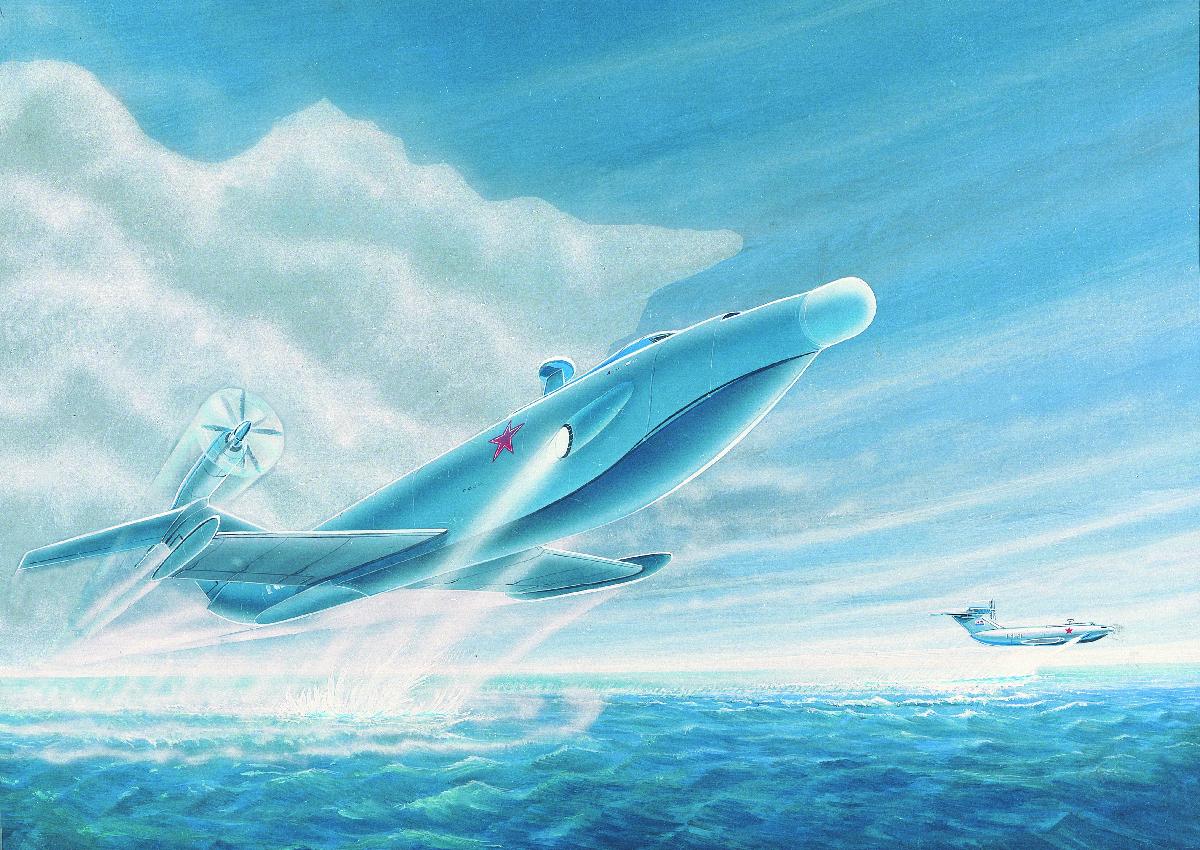
Soviet Wing-In-Ground Effect Aircraft by Brian W. McMullin, 1988
By exploiting what’s known as “ground effect,” wherein an aircraft’s wings generate extra lift and less drag when flying close to a fixed surface like the ground or the surface of water, Soviet researchers hoped to develop a class of outsize ground-effect vehicles — like the Orlan-class above — for coastal defence and amphibious assaults.

Soviet Ballistic Missile Submarine Base by Brian W. McMullin, 1986
The Arctic Circle played host to a number of strategic battles between East and West during the Cold War. At one time, the USSR considered deploying its Typhoon and Delta IV strategic ballistic missile submarines there, using tunnels dug into the hillside to provide the most advanced nuclear subs in the Russian armada plenty of protection from counterattack. Unfortunately, they didn’t count on us sending Clint Eastwood in to steal their supersonic spy plane.
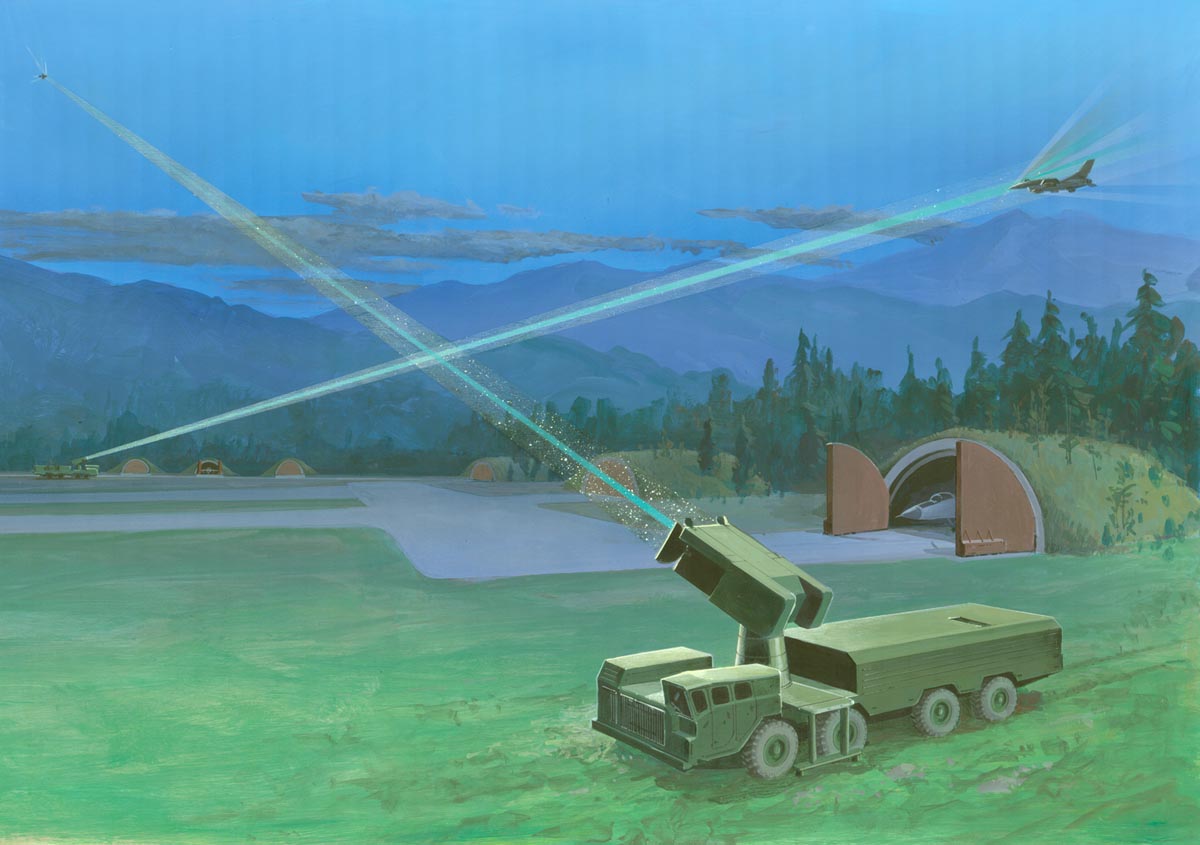
Soviet Mobile Lasers Defending an Airfield by Edward L. Cooper, 1987
Since lasers were clearly Russia’s answer to everything in the 1980s, Soviet researchers examined the technology’s potential use in airfield defence. These truck-mounted platforms wouldn’t simply blind incoming pilots like modern handheld lasers do, they would melt the fuselage and set the plane on fire. The technology made it quite far through the prototype and testing process — to the point that a number of analysts at the time expected the USSR to actually field a production-ready model within the next decade. Thankfully, the Soviets had no clue how to run an economy, and the entire regime collapsed in upon itself before the mobile lasers could be utilized.
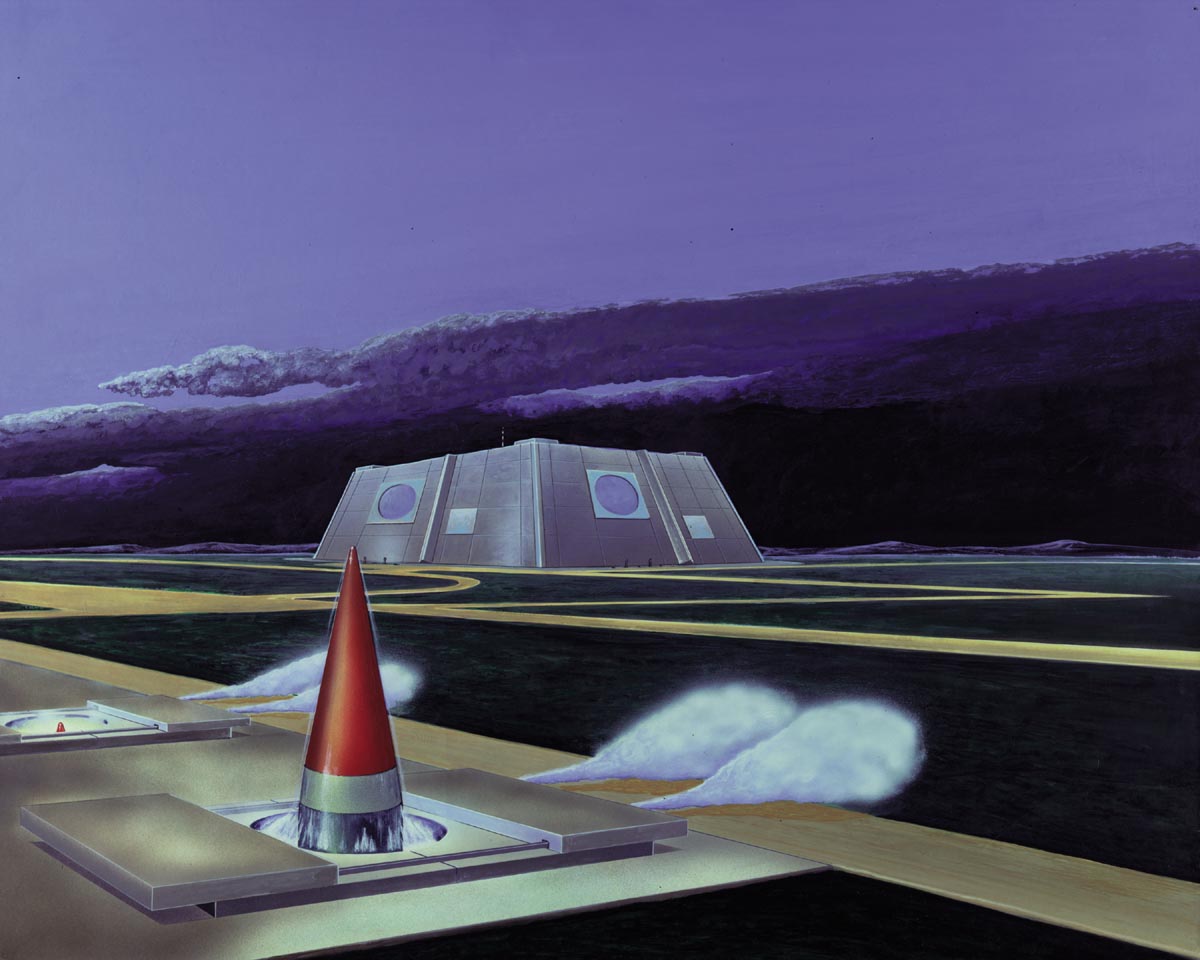
Pushinko ABM by Ronald C. Wittmann, 1983
The Soviet Yang to the American Atlas’ Yin, the Pushinko ABM (anti-ballistic missile) was the first of its kind as well as the only operational one. ABMs are missiles specifically designed to intercept the multiple warheads of incoming Inter-Continental Ballistic Missiles. The Soviet system was installed on the outskirts of Moscow in the 1970s, but just a decade later, was upgraded with silo-based, nuclear-tipped Gazelle interceptor missile and larger radar to better monitor and command the ABMs as they streaked towards their targets.
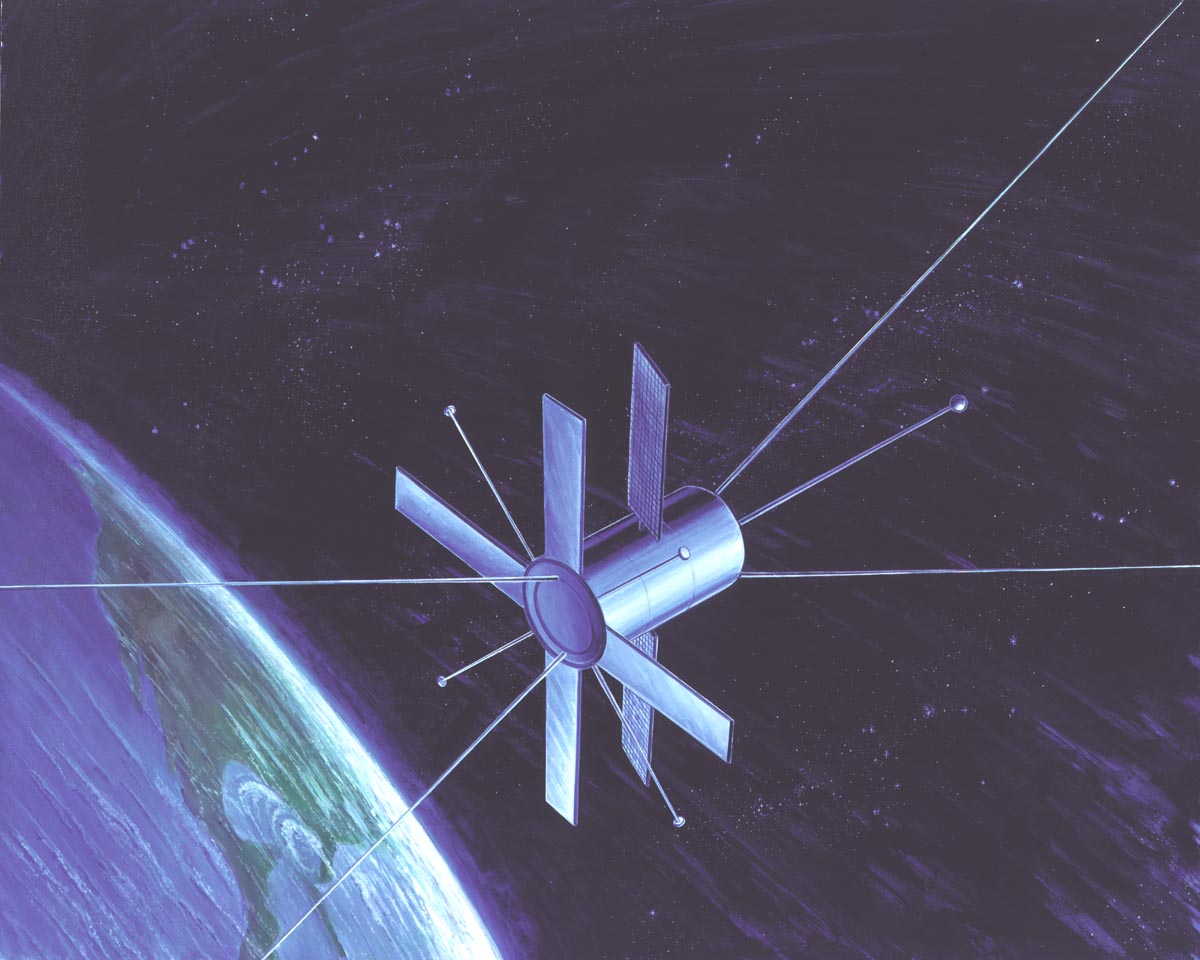
Cosmos 389 ELINT by Brian W. McMullin, 1982
Space became a battleground between the US and USSR well before Reagan floated the Star Wars idea. In the early 1970s, Russia launched the Cosmos 389, the first of what would become known as “ferret” satellites. These small spacecraft lock on to radar and radio emissions that could identify US air defence sites and command centres, a boon to Soviet Intelligence.
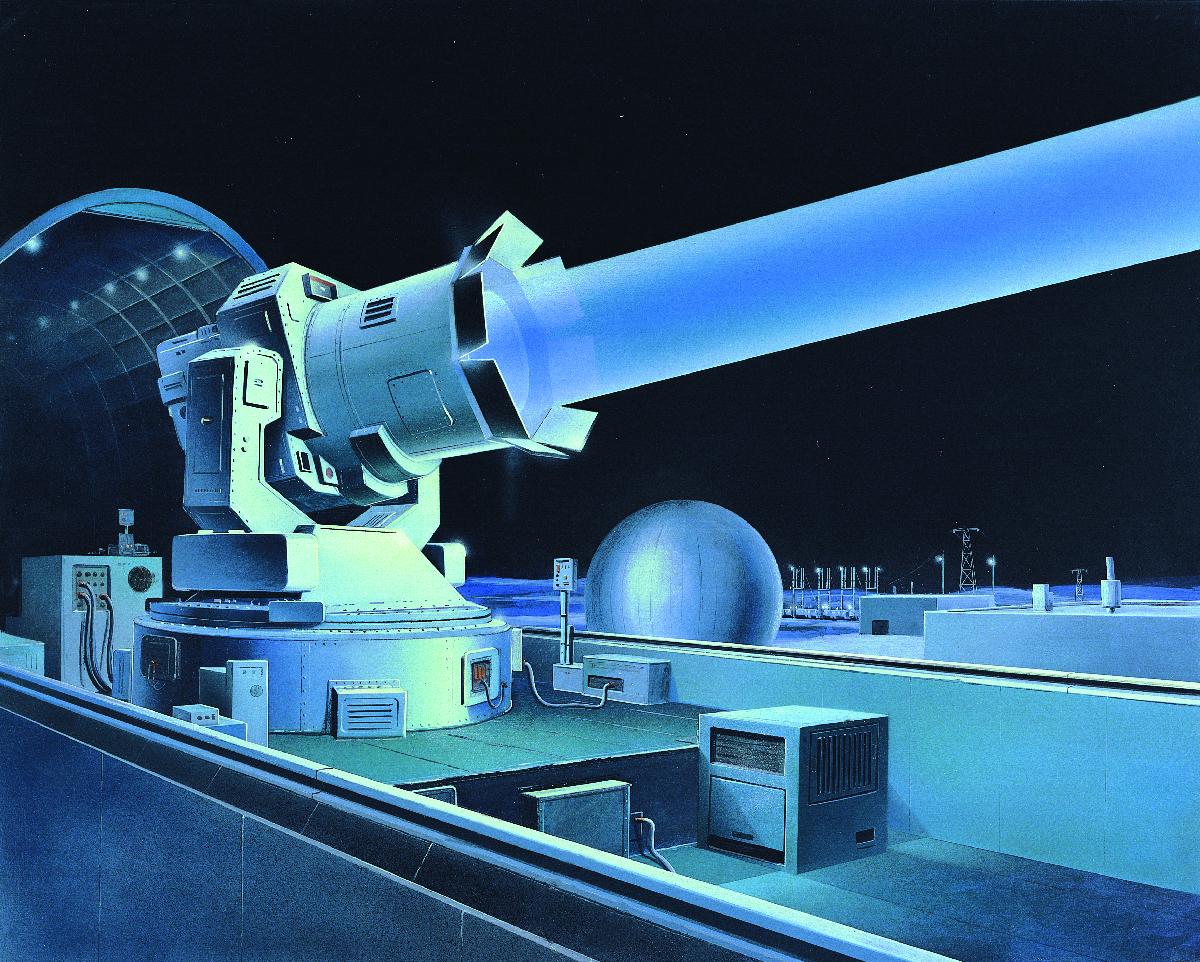
Soviet Ground-Based Laser by Edward L. Cooper, 1986
During the 1980s, the Soviet Strategic Defence Program invested heavily in ground-based lasers capable of scrambling overhead satellites. And while US Intelligence argued that sites like Terra-3 in Kazakhstan were proof of a so-called “laser gap,” the Soviet technology never came close to fruition. A few modest prototypes were tested though.
